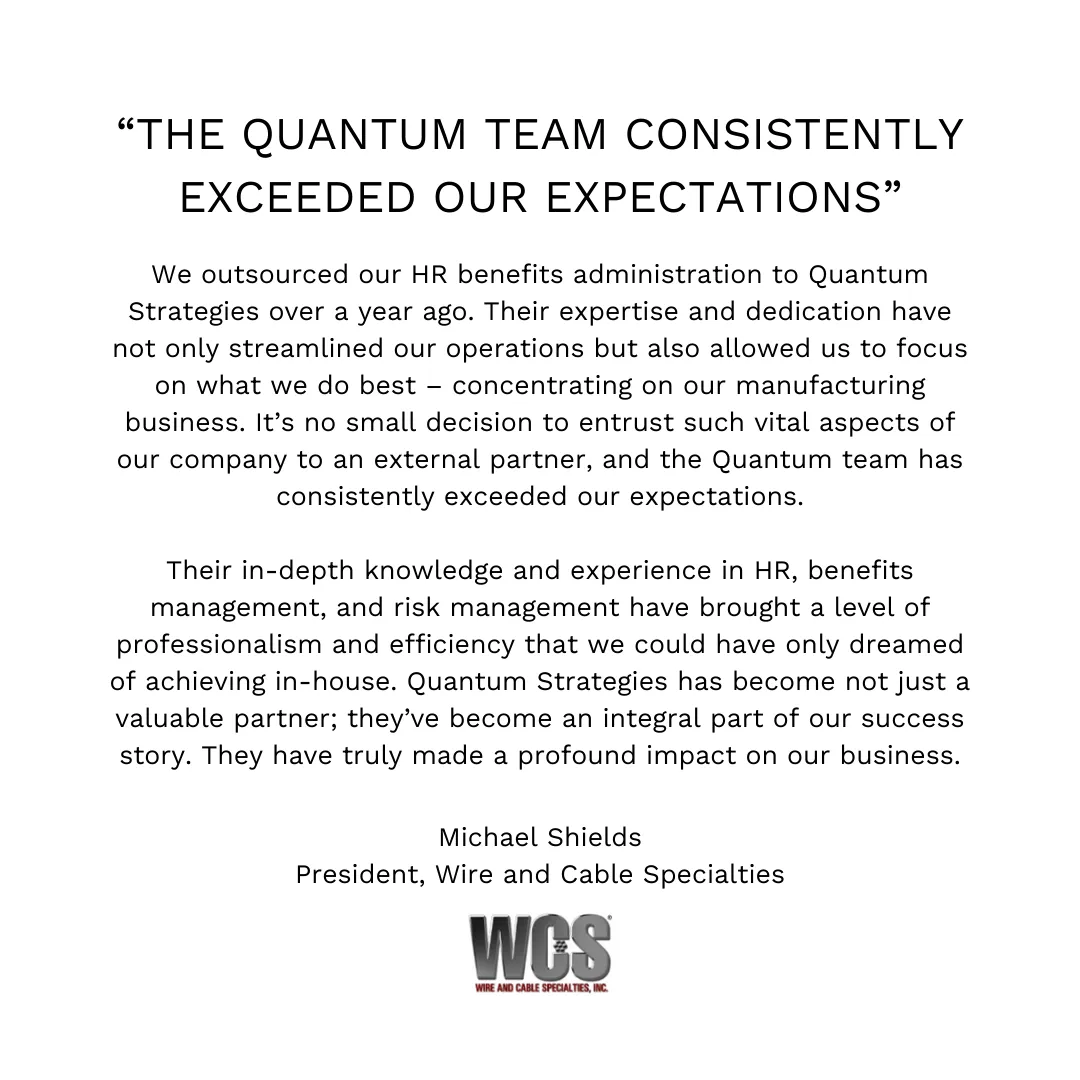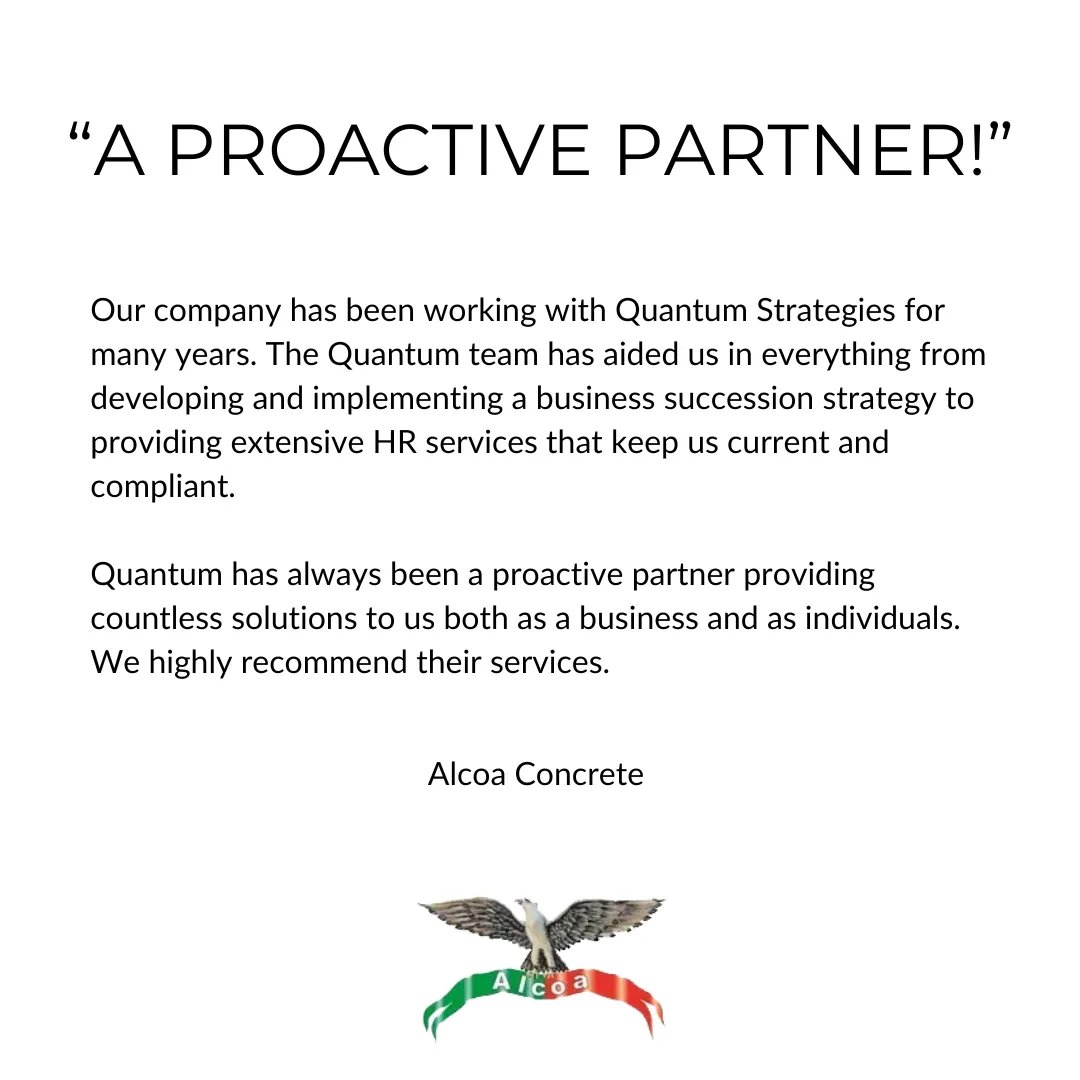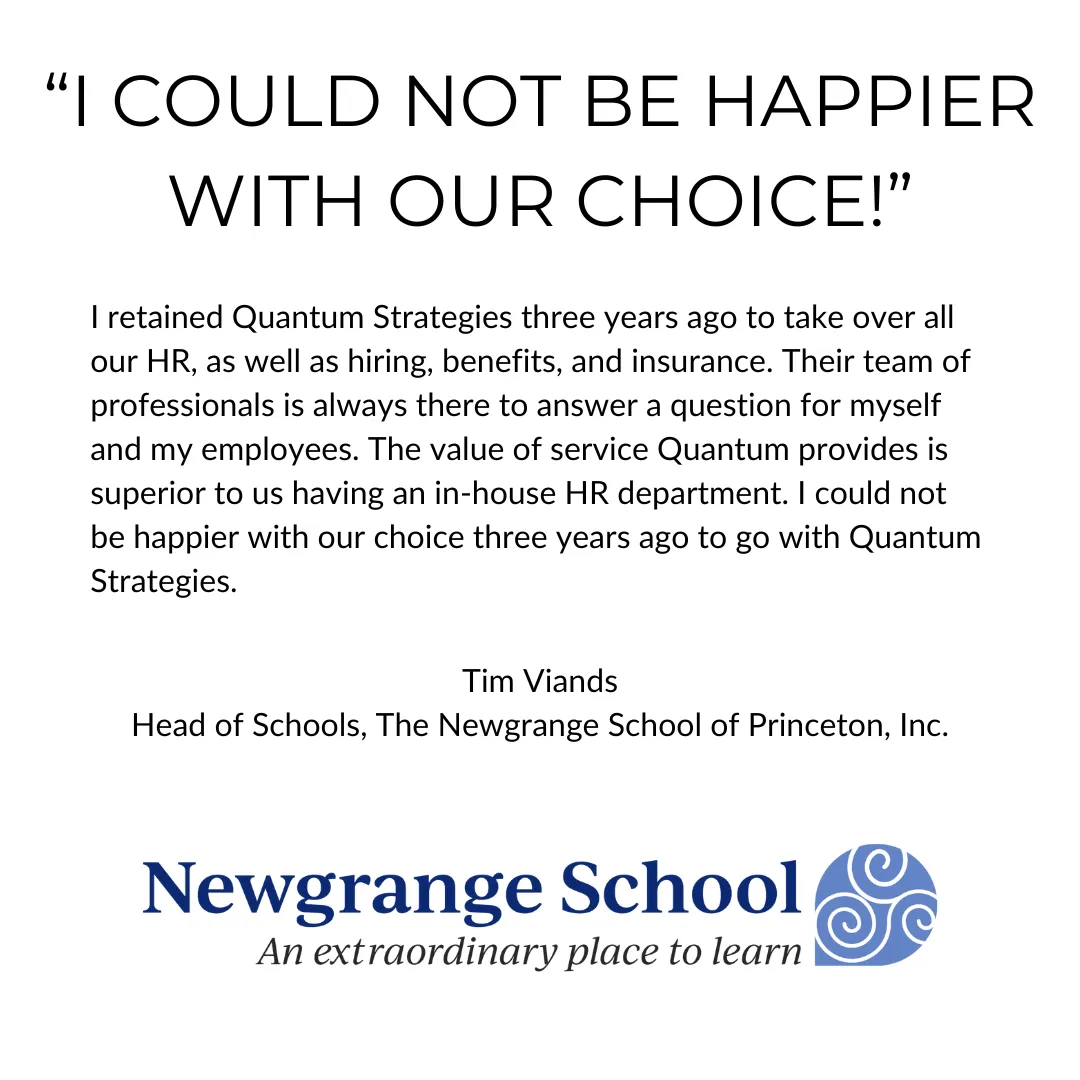Tailored HR Solutions as Unique as Your Business
Expert consulting and service to elevate your HR from a headache to a value driver.
Does Your HR Function Make the Grade?
Take our 5-minute quiz and evaluate the effectiveness of your HR function.

How We Help
We Focus on Your HR Needs,
So You Can Focus on Your Mission.
At Quantum Strategies, we understand that effective human resource management is the cornerstone of every successful business, regardless of size. Our mission is to provide tailored HR solutions that align perfectly with your unique business needs and growth stage.
Our Services
Navigating Change with Confidence: Quantum Expert HR Solutions
From Policy Assistance to Leadership Succession Planning, Quantum Strategies is Your Ultimate HR Resource to Solve Your Business Challenges.
HR Operational
Assessments
Unlock the full potential of your HR department. Our collaborative approach brings clarity and efficiency to your HR operations, providing a thorough analysis of your department's structure, costs, effectiveness, and needs.
Comprehensive Analysis: Detailed evaluation of your organization, workgroups, and individual roles for optimized efficiency.
Objective Insights: Receive a clear blueprint highlighting your HR department's strengths, weaknesses, and gaps.
Strategic Recommendations: Actionable plans focusing on technology utilization, communication enhancement, and leveraging department strengths.
HR Consulting and Managed Services
Tailored to align with your unique needs, our HR consulting and managed services enhance operational efficiency and effectiveness, allowing you to focus on your core mission while we optimize your HR investment.
Expert Supplemental Support: Strengthen your existing HR team with specialized expertise to navigate complex HR landscapes.
Personalized, Agile Solutions: Customized services for organizations with or without HR teams, adaptable to your specific requirements.
Goal-Oriented, Clear Communication: Delivering precise, actionable strategies that align with your organization’s goals and ensure successful execution.
Custom HRIS Design and Integration
Revolutionize your HR data management. Our team will evaluate your current human resources technology stack, offer recommendations, and then integrate your new and existing systems with our cutting-edge technology, ensuring seamless data flow and optimized operational efficiency.
Seamless Integration: Connect legacy systems with modern platforms for streamlined data management.
Tailored Design: Custom HRIS solutions uniquely crafted to meet your specific business needs.
Advanced Analytics: Leverage data-driven insights for strategic decision-making and operational excellence.
“Successfully steering through the specialized HR challenges within organizations of all kinds demands expert understanding, strategic planning, and precise implementation. With comprehensive knowledge of these challenges and the right solutions, your business can stay focused and successful in their vital missions.”
William J. Rizzo

Who we Are.
We Focus on Your HR Needs,
So You Can Focus on Your Mission.
At Quantum Strategies, we recognize that proficient management of human resources is fundamental to the success of any enterprise, irrespective of its scale. Our objective is to deliver customized human resource solutions that are in perfect harmony with your distinct business requirements and developmental phase.
Constant Improvement
Commitment to Customers
High Level Of Knowledge
Best Service You Can Get
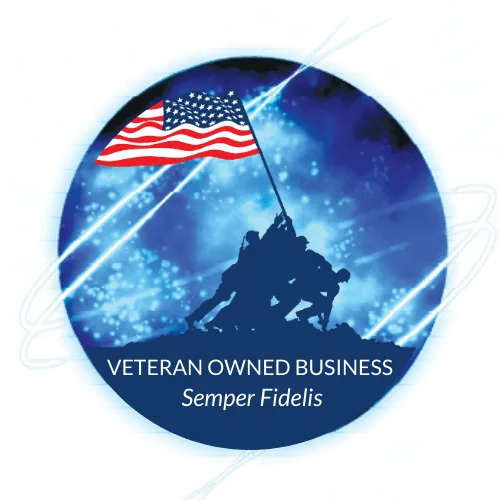
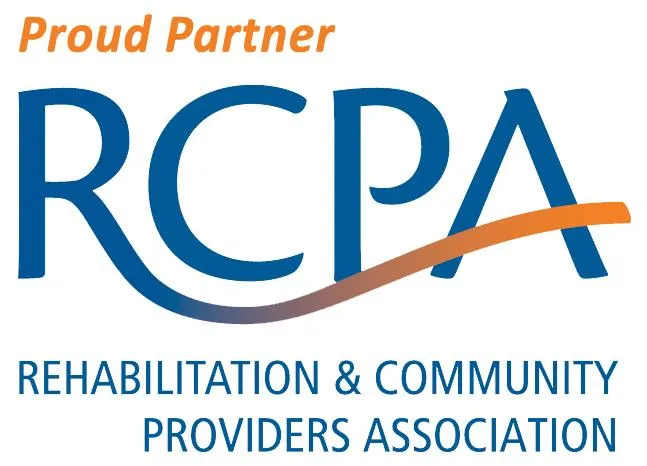
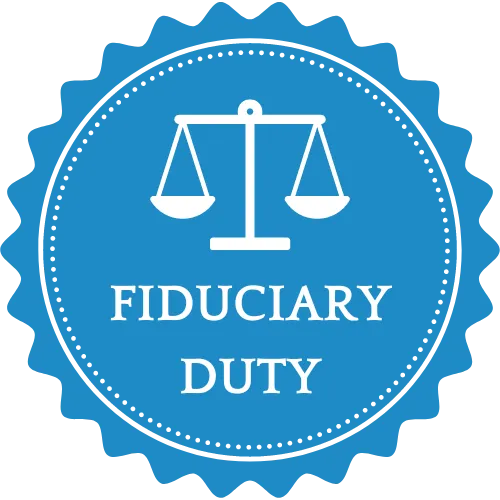
Why Choose Us
A True Partner to Solve Your Most Complex HR Challenges.
Empowering HR Innovation and Compliance
Commitment to 100% Client Satisfaction
People-First Approach

Peace of Mind:
Handle ongoing compliance with ease

Employee Satisfaction:
Build a positive workplace with engaged employees

Strategic Confidence:
Drive strategy with advanced analytics

Leadership Development:
Equip your team with the tools to lead

2,245 +
Happy Clients

25 +
Years Of Experience

120 +
Professional Team
Testimonials
The Quantum Commitment - 100% CLIENT SATISFACTION!
At Quantum, we understand that your satisfaction matters most, and The Quantum Commitment is our way of putting that understanding into action. Experience the difference with a team that is dedicated to making your satisfaction the cornerstone of our service. Because when you choose Quantum, you choose excellence, reliability, and a commitment to exceeding your expectations every time.
Our Resources
Unveiling Proven Strategies and Insights.
Discover actionable tips, expert advice, and industry insights to fuel your journey towards success.

Fostering a Psychologically Safe Workspace
As we navigate the complexities of the post-pandemic world, the importance of mental health in the workplace has surged to unprecedented levels. According to research from the
American Psychological Association, 81% of employees are now actively seeking workplaces prioritizing mental well-being.
Key Challenges Faced by Human Resources in Nonprofit Organizations
The nonprofit sector brings its own set of specialized difficulties, especially in the area of human resources (HR). Although these difficulties may share some common ground with those in the for-profit industry, they possess unique characteristics that require special attention from nonprofit leaders.
FOUND THESE HELPFUL?
Explore Additional Articles and Resources In Our Blog
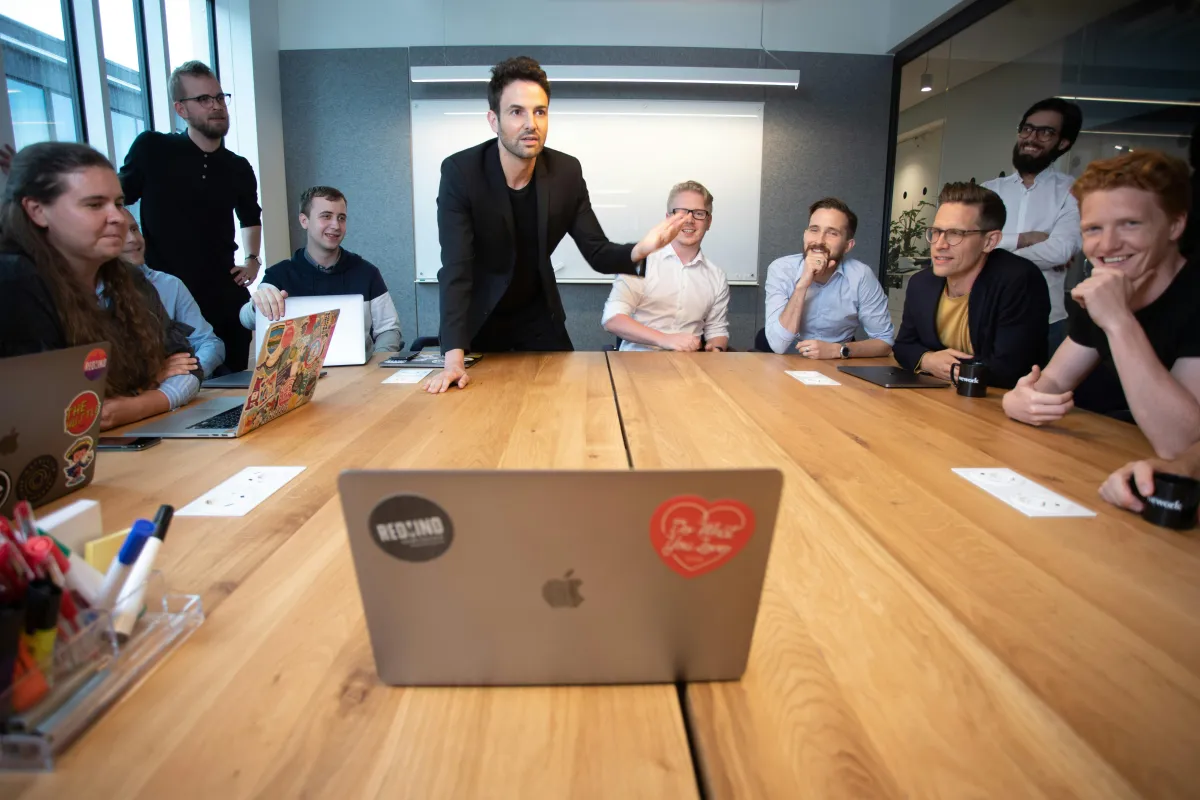
How to Improve Employee Morale Through Strategic Recognition & Rewards
Employee recognition is a purposeful tactic intended to boost engagement, workplace happiness, and overall productivity. It goes beyond simple reassurance. In today's harsh labor market, employees want more than a paycheck; they want to feel that their contributions are acknowledged, respected, and appreciated. Programs for incentives and recognition are essential for developing a positive workplace culture, rewarding productive conduct, and strengthening bonds between staff and management.
Businesses that invest significantly in recognition programs observe quantifiable increases in operational effectiveness and employee happiness. Giving credit for their efforts builds an emotional bond between them and the business, which boosts motivation, loyalty, and overall job performance. Employees who believe their efforts are valued are likelier to remain involved, team players, and take the initiative to contribute to the organization's long-term success.
The Importance of Employee Morale
Employee morale is one of the most critical elements affecting an organization's performance. A high-morale workplace fosters an environment of trust, zeal, and perseverance, where staff members are inspired to contribute their best ideas. Conversely, low-morale companies frequently experience lower productivity, increased turnover rates, and less motivation, which may be expensive setbacks for firms, particularly smaller ones trying to make a name for themselves in cutthroat markets.
Recognition is the foundation of morale-boosting strategies, transforming routine tasks into meaningful work by consistently acknowledging employees' impact and abilities. When employees feel seen and valued, engagement, productivity, and loyalty naturally increase. Techniques for personalized recognition that improve team dynamics are especially advantageous for smaller companies. Smaller businesses frequently have close-knit teams, so appreciation initiatives support corporate culture, foster a feeling of community, and inspire staff to perform above and beyond expectations.
Leveraging Recognition to Strengthen Workplace Culture
The most successful recognition and incentive programs include daily deliberate recognition practices that make gratitude a fundamental part of interactions at work, going beyond yearly bonuses or performance appraisals. Simple actions like verbal appreciation, team-wide announcements, or specially designed rewards based on employee preferences fall under this category. To have an impact, recognition doesn't have to be lavish; it just needs to be implemented consistently so that workers truly feel appreciated.
Prosperous businesses frequently use structured recognition programs that support corporate objectives and foster long-term employee motivation. Quantum Strategies Employee Engagement Centre (EEC) provides comprehensive reward systems to keep employees engaged. This can be appreciated through supervisor-led recognition, peer-to-peer acknowledgments, and a point-based reward structure. Unlike generic recognition programs, the EEC has a customizable point system. This allows employees to earn and redeem rewards solely based on their individual achievements, creating an incentive for excellence.
Quantum Strategies enhance employee appreciation by blending formal and informal recognition, using engagement tools and rewards to turn appreciation into a business advantage.
Businesses that emphasize appreciation build closer relationships with their staff, resulting in a workplace based on respect, trust, and motivation. An investment in recognition is an investment in long-term success, whether through personalized incentive systems, team recognition platforms, or written acknowledgments.

Types of Employee Recognition & Rewards Programs
1. Formal Recognition Programs
Formal recognition programs are structured initiatives that acknowledge individual or team success. Examples include:
Employee of the Month awards: Celebrating outstanding contributions every month would motivate individuals to strive for high performance.
Performance bonuses: Linking recognition to performance metrics can drive productivity and align employee efforts with company goals.
Certifications for achievements: Providing certifications for milestone achievements recognizes employees and enhances their professional credentials.
2. Informal Recognition Programs
Informal, spontaneous recognition can be equally impactful. Consider:
Personalized thank-you notes: A simple handwritten note can make employees feel valued and appreciated.
Public appreciation in team meetings: Recognizing achievements in team settings fosters a sense of community.
Virtual shout-outs in company communication channels: Leveraging digital platforms for public acknowledgment helps support a culture of gratitude, especially in remote settings.
3. Peer-to-Peer Recognition
Encouraging employees to recognize and celebrate each other's contributions can strengthen teamwork and morale. Quantum Strategies' EEC enables this through an interactive internal social feed, where colleagues can share praise and engage in meaningful acknowledgment.
With its unique gamification features, custom challenges, leaderboards, and badge achievements, the EEC rewards recognition. Employees can earn points for participation, which can be redeemed for gift cards or even exclusive perks.
4. Creative, Cost-Effective Recognition Ideas
Not all recognition programs require hefty budgets. Creative recognition can be both impactful and economical. Ideas include:
Giving handwritten notes of appreciation: Personalized touches can leave a lasting impact.
Assigning an employee as an "honorary boss" for a day: Allowing employees to experience leadership roles can boost their morale.
Creating a team recognition wall: A designated space for recognizing accomplishments can foster a sense of pride.

Steps to Develop and Implement a Successful Program
Creating an effective recognition program requires careful planning and alignment with company culture. Here's how to develop a structured approach:
Step 1: Assess Employee Needs
Any effective recognition program starts with a grasp of what employees genuinely value. Employers could start by gathering feedback on preferences for reward types, frequency, and styles through focus groups, questionnaires, or casual discussions.
Key questions to ask include:
Do employees prefer public recognition or private acknowledgment?
Are financial incentives more motivating, or do non-monetary rewards (extra time off, career development opportunities) have a more substantial impact?
What rewards would feel genuinely meaningful rather than generic or obligatory?
By obtaining thorough employee input, HR directors can adjust recognition initiatives to match real employee demands rather than assuming anything.
Step 2: Set Clear Objectives
Establishing quantifiable objectives for the recognition program is essential for monitoring its efficacy and proving its influence. Whether the goal is to improve retention, increase engagement, or boost overall performance, these goals should align with the larger business priorities.
Common program goals might include:
Increase employee satisfaction scores by 20% within the following year.
Reducing turnover rates among key positions by implementing structured recognition practices.
Boosting productivity by ensuring employees feel appreciated for their contributions.
Organizations can monitor their success and modify their plans by establishing clear benchmarks.
Step 3: Choose the Right Tools
Technology is essential to streamlining recognition efforts and making the process effective, scalable, and available to all teams.
Key factors to consider when selecting a platform:
Ease of use: Can employees and managers engage with the platform effortlessly?
Customization options: Does it allow for personalized recognition and tailored rewards?
Integration capabilities: Can it connect with existing HR software or communication tools?
Choosing a platform that aligns with company size, budget, and workforce preferences ensures seamless implementation.
Step 4: Structure the Program
A recognition program should include a balance of formal, informal, and peer-driven acknowledgment to ensure broad participation and meaningful impact.
Formal recognition strategies might involve:
Performance-based bonuses are tied to specific KPIs.
Annual awards or milestone celebrations.
Career advancement opportunities are incentives.
Informal recognition strategies could include:
Verbal praise during meetings.
Spot bonuses or small perks for exceptional work.
Personal thank-you notes from leadership.
Thanks to peer-driven recognition, employees can celebrate each other's accomplishments instead of depending solely on administrative recognition, promoting a culture of cooperation and gratitude.
Step 5: Train Leaders & Managers
Managers are essential to guarantee that recognition is impactful and consistent. Without enough training, acknowledgment may seem compelled, irregular, or unrelated to the organization's culture.
Managers should be equipped with strategies for:
Delivering authentic, meaningful praise tailored to individual employee contributions.
Recognizing employees equitably to avoid favoritism or unintentional bias.
Encouraging peer-to-peer acknowledgment to enhance teamwork.
Workshops, internal guidelines, or leadership coaching sessions help guarantee that recognition practices are successfully incorporated into managerial routines.
Step 6: Monitor and Adapt
Once implemented, a program must be continuously evaluated to guarantee long-term success. HR teams may identify what's working and where improvements are needed by using regular employee feedback, performance analytics, and engagement surveys.
Metrics to track include:
Employee satisfaction rates before and after implementation.
Changes in retention and turnover trends post-launch.
Engagement levels are reflected in performance outcomes.
When the program is actively modified in response to feedback, recognition stays impactful, current, and aligned with employee expectations.
Embedding Recognition in Company Culture
Recognition should be an ongoing practice, not an occasional event. Organizations can integrate recognition into their culture by:
Encouraging daily appreciation gestures: Simple acts of gratitude can become habits in the workplace.
Making recognition inclusive for all employees: Ensuring everyone can be recognized fosters a sense of belonging.
Creating team-building activities centered around appreciation: Activities focused on recognition can strengthen team bonds.
By adopting these practices, companies foster a positive work environment where recognition is second nature. The goal is to weave recognition into the fabric of daily interactions.
Overcoming Challenges and Common Pitfalls
Even well-intentioned recognition programs can encounter hurdles such as:
Lack of consistency: Inconsistent recognition can lead to confusion and diminish the impact.
Managerial bias: Some managers may inadvertently favor certain employees over others. Promoting fairness and equity recognition is essential.
Budget constraints: While recognition programs are crucial, it's also essential to respect budget limitations.
The solution? Regular training, transparent criteria, and leveraging technology to streamline recognition efforts can help institutions effectively navigate these challenges.
Measuring the Impact of Your Recognition & Rewards Program
To measure success, businesses should monitor essential performance indicators such as attrition rates, engagement levels, and employee satisfaction ratings. Recognition can have a significant impact, but it must be quantified to develop continuously.
Feedback surveys and statistics from recognition platforms ensure a culture of continuous improvement. These reaffirm the importance of recognition in boosting employee engagement and morale. Frequent assessments shed light on what is effective and where changes are required.
Summary
Establishing an effective recognition and awards program is more than simply a workplace bonus; it is crucial for promoting employee engagement, morale, and long-term organizational success. By fostering an atmosphere where workers feel valued, inspired, and appreciated, businesses may develop a dynamic workplace culture that encourages cooperation, loyalty, and productivity.
Effective recognition programs align with company values and go beyond simple praise, using rewards and peer recognition to boost morale, teamwork, and satisfaction.
Smaller companies can use individualized recognition programs to establish strong bonds with their staff by integrating gratitude into their everyday interactions. Businesses that incorporate recognition into corporate culture encourage employees to do their best work and establish a foundation of trust, motivation, and long-term retention.
When done correctly, recognition transforms workplaces by fostering an environment where employees are inspired to collaborate effectively, share their talents, and help the business succeed from the ground up.
Need help designing the perfect recognition strategy for your team? Contact us today to explore how our Employee Engagement Centre (EEC) can transform your workplace.
Connect
Keep Up with Our Latest News and Insights
Subscribe to Quantum Strategies' latest updates and insights.
Office: Philadelphia, PA | Glen Mills, PA | Washington, DC
Call 610.624.1770
Email: info@QS2500.com
Site: www.QS2500.com

